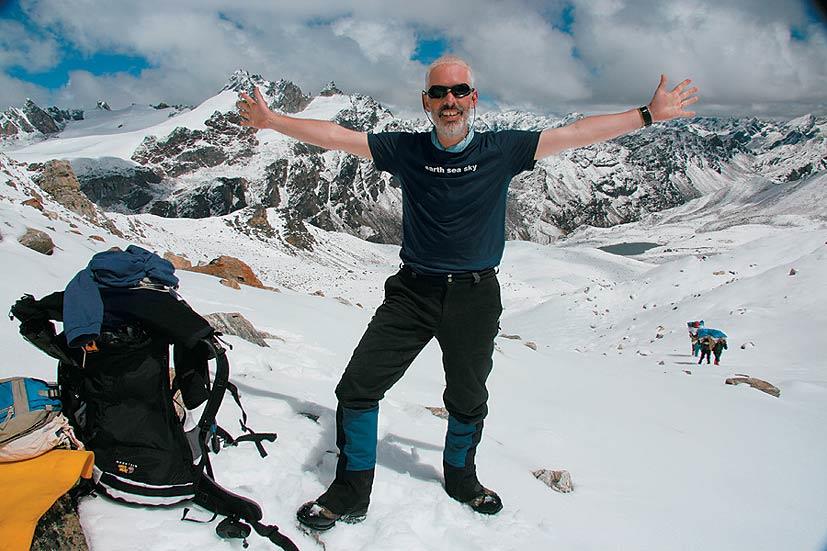OT: How did it all start? Robin Boustead: I grew up in Australia where I have been working
OT: Tell us about the Himalayan connection.
Robin Boustead: I fell in love with the Himalaya on my first visit in 1993 and it was here that I met my wife. Now, I spend 3-8 months every year, just walking in the mountains. And I have been working to develop the outdoor industry here — the options on offer right now are very mediocre.
OT: Why mediocre?
Robin Boustead: People have only seen 20 per cent of the Himalaya. The 80 percent that they don’t see is even better. But opening it up to visitors must be done responsibly. Besides, no one wants to go see other tourists or use wi-fi. What they want is genuine, participatory experience in the local communities and the opportunity to see the wilderness.
OT: Ever feel out of place in the wilderness?
Robin Boustead: Never. The sense of belonging is overwhelming. I can’t explain how happy I am there. Maybe I was a Himalayan shepherd in my past life!
OT: Tell us about your current trip.
Robin Boustead: We’re walking from Kumaon to Kashmir in about four months. A lot depends on permits though.
OT: What is your longest stint so far?
Robin Boustead: The longest nonstop trek I have done is for 104 days from Nepal to Darchula. I have done many 40- to 50-day treks.
OT: On such long treks, how do you cope when enthusiasm falls on bad days?
Robin Boustead: Though you always have to mentally prepare yourself for such long treks, there are patches when enthusiasm plummets. There are times when I am exhausted physically and mentally but I always turn around and realise that a 100 days’ trek is nothing compared to the hardships borne by the communities who have been living there for thirty generations. Now, that is tough!
OT: Do you ever feel the risk to life?
Robin Boustead: I never risk my life. When you are travelling in these conditions, substantial knowledge is crucial. It is like creating a risk-management strategy. The crew is very important too and it is important to have a backup plan. The purpose of the activity is not to endanger life but to tackle the most difficult situations in the wild with safety.
OT: How does it feel when you approach a city after your travels?
Robin Boustead: I don’t look forward to it at all, though I am always happy to have a cold beer and a hot shower. And if I have the opportunity to watch a cricket match in the higher mountains, I think I would just find my nirvana.
OT: How do you fund your projects? Do you have a job back home that supports this?
Robin Boustead: For a long time it was self-funded. But now I have managed to get sponsorship from travel and adventure companies in Australia, Canada and Europe. I don’t do this for money. When you are standing in the hills, all thoughts about money just vanish.
OT: What do you do when you are not trekking in the Himalaya?
Robin Boustead: I am either planning a trek, writing a report about a trek or thinking about the next trek.
For information on GHT or to volunteer for other such trails organised by Robin, see thegreathimalayatrail.org
Leave a Reply
You must be logged in to post a comment.


